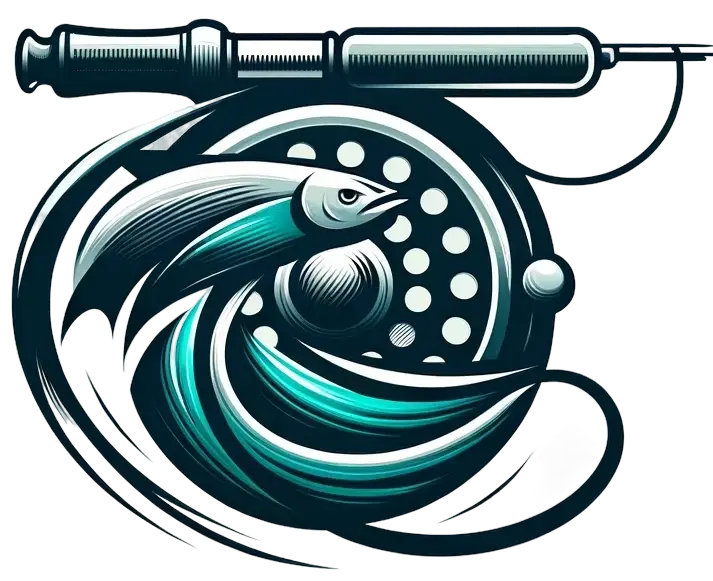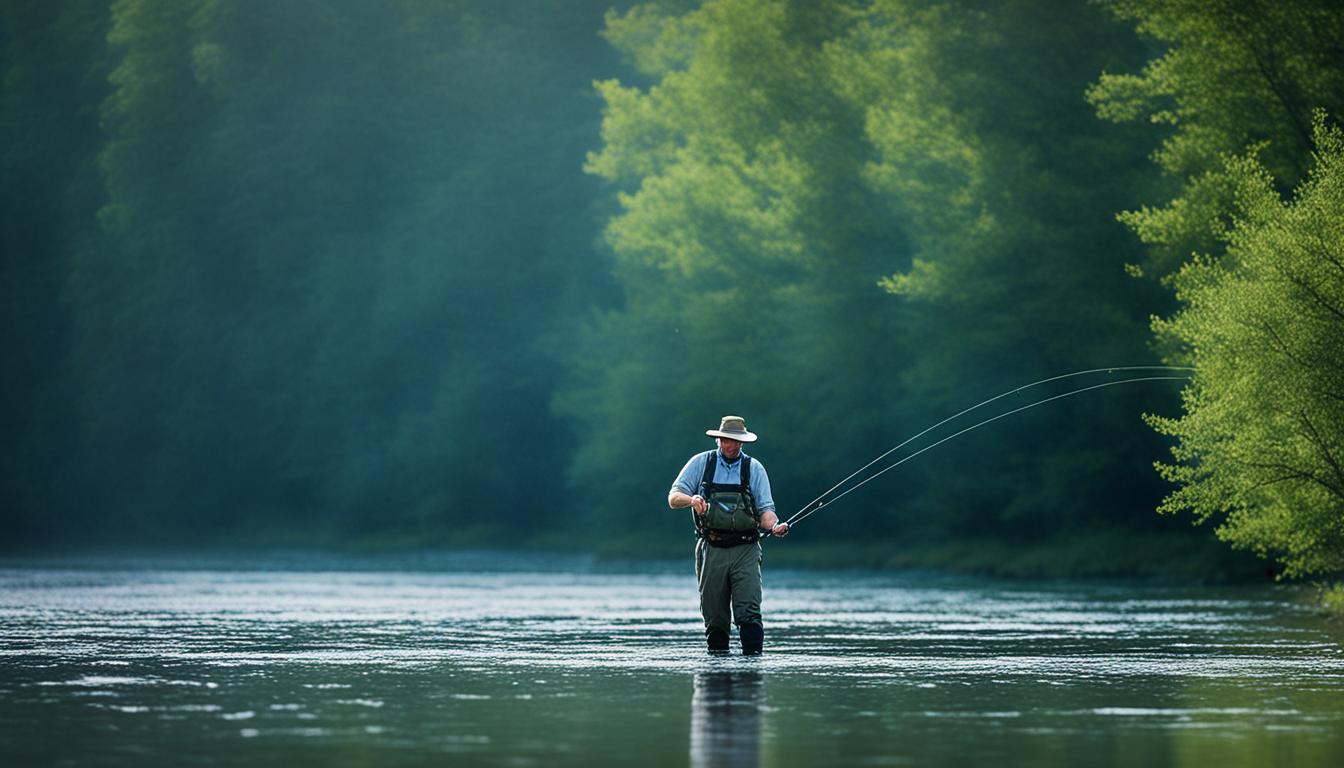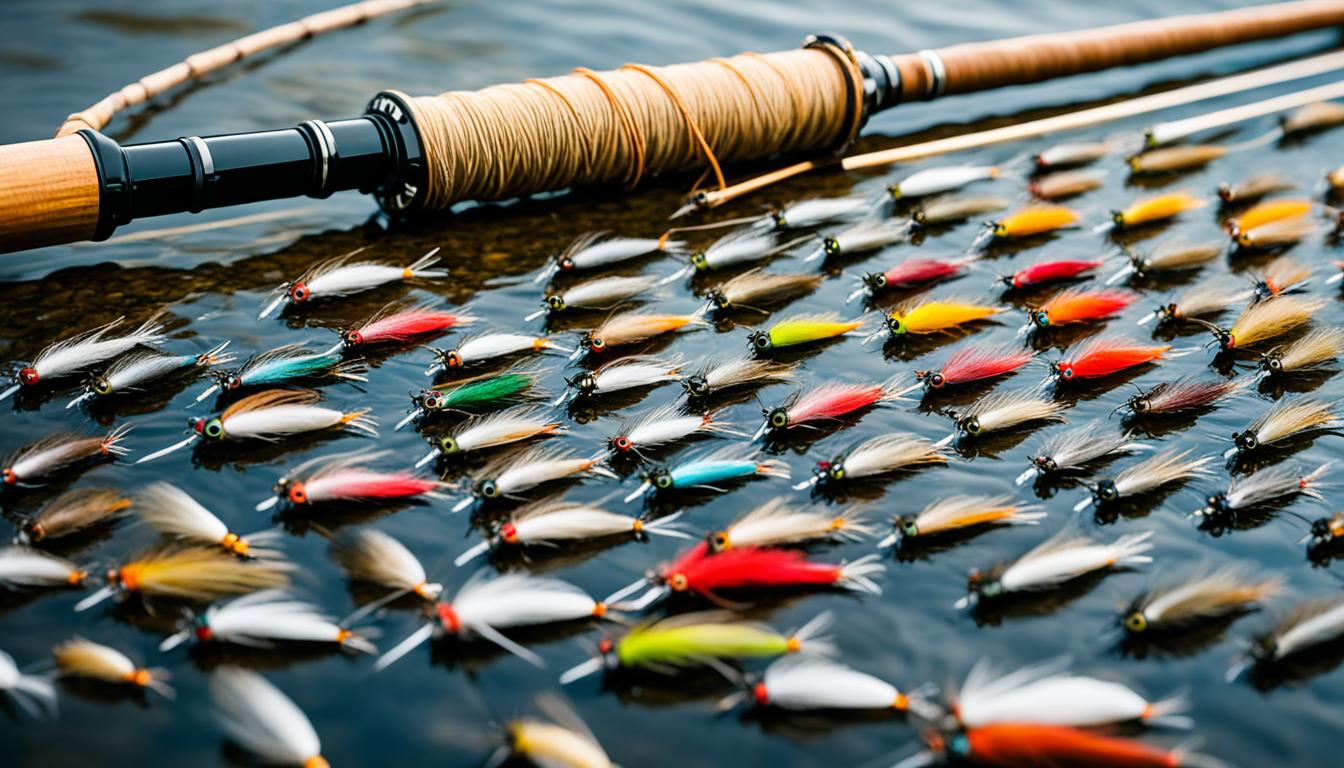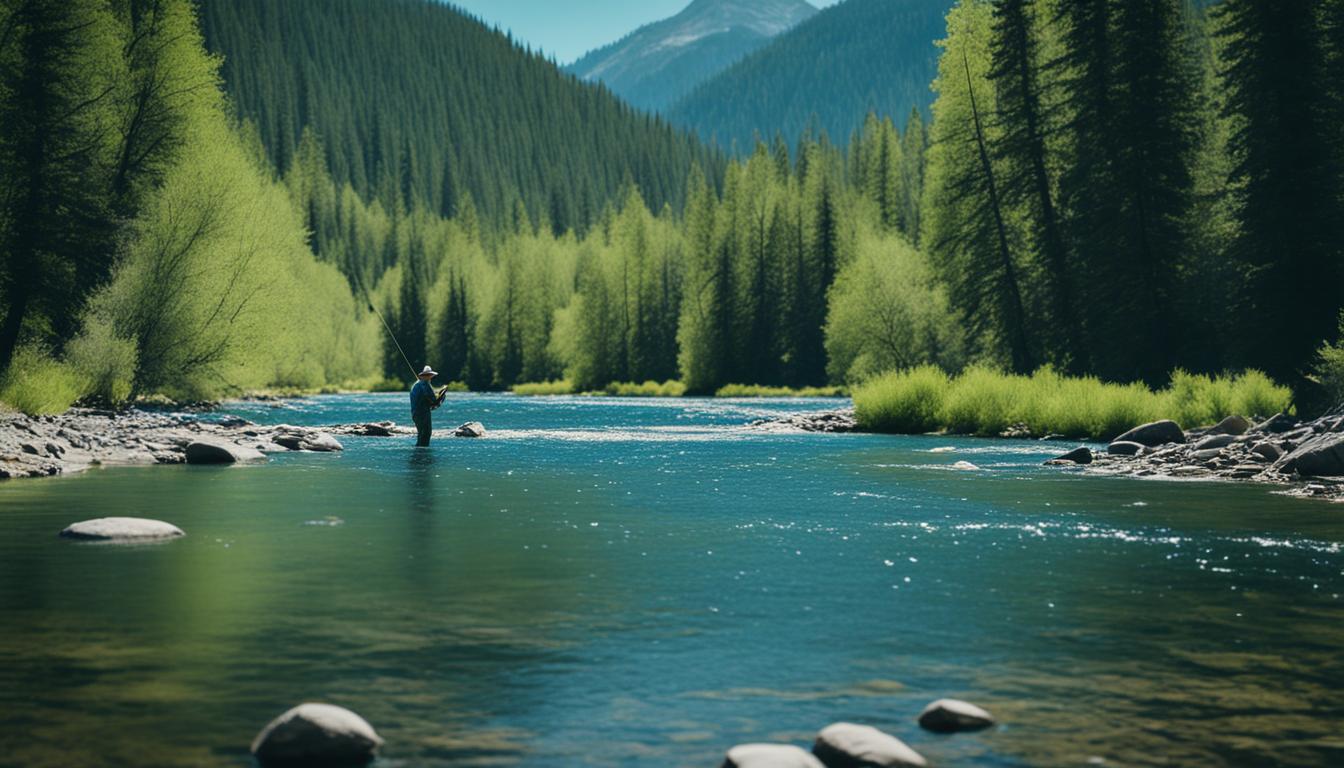Welcome to our article on deep water nymphing, an advanced technique used in fly fishing to target trout in streams and rivers. Nymph fishing is a popular method among anglers, as it allows for a more realistic presentation of fly patterns that imitate the nymph stages of insects. In this section, we will explore various underwater nymphing techniques that will help you become a more successful angler in deep water.
Key Takeaways
- Deep water nymphing is an effective technique for fly fishing in streams and rivers.
- Using nymph patterns that imitate subsurface insect stages can attract more trout.
- Getting the fly deeper in the water column increases your chances of success.
- Setting the indicator at the right height and reading strikes are crucial skills to develop.
- Exploring different nymphing techniques can help you adapt to various fishing conditions.
Understanding Nymph Fishing vs Dry Fly Fishing
When it comes to fly fishing, there are two distinct methods that anglers employ: nymph fishing and dry fly fishing. These techniques are used to imitate different stages of an insect’s life cycle and require different strategies and fly patterns.
Nymph fishing focuses on imitating the subsurface stages of insects, particularly the nymph stage. Nymphs are aquatic insects that live underwater and are a vital food source for fish, especially trout. To effectively nymph fish, anglers use flies that replicate these subsurface stages and drift them through the water column.
Dry fly fishing, on the other hand, involves imitating insects in their adult stage floating on the surface of the water. This method is often considered the epitome of fly fishing, as it allows anglers to witness the exciting moment when a fish rises to take a fly off the surface.
While both nymph fishing and dry fly fishing have their merits, understanding the differences between the two is crucial for success on the water. Nymph fishing requires anglers to replicate the subsurface stages of insects and drift their flies through the water column, targeting fish feeding below the surface. Dry fly fishing, on the other hand, involves presenting flies that imitate adult insects floating on the surface, enticing fish to rise and strike.
One key concept to grasp when nymph fishing is the emergence of insects from the nymph stage to the adult stage. This transition is represented by emergers, which are flies that imitate insects in the process of emerging from the water. These flies can be particularly effective as they mimic vulnerable prey and attract feeding fish.
“Nymph fishing and dry fly fishing are two distinct methods used in fly fishing. Nymph fishing involves using fly patterns that imitate the subsurface stages of insects, while dry fly fishing uses flies that replicate insects in their adult stage and are meant to float on the surface of the water.”
Understanding nymph fishing and dry fly fishing allows us to adapt our tactics to suit the conditions and the behavior of the fish. By recognizing the importance of the nymph stage of insects and their movement within the water column, we can select the appropriate fly patterns and present them in a way that entices fish to strike. Whether nymph fishing or dry fly fishing, both techniques offer unique challenges and rewards for the avid fly angler.
Nymph Fishing vs Dry Fly Fishing
| Nymph Fishing | Dry Fly Fishing |
|---|---|
| Imitates subsurface stages of insects | Imitates adult insects on the surface |
| Targets fish feeding below the surface | Targets fish rising to take flies on the surface |
| Requires understanding of nymph stage and water column | Requires presenting flies that float naturally on the surface |
| Uses nymph patterns and emergers | Uses dry flies and attractor patterns |
Getting the Fly Deeper
To effectively imitate the movements of subsurface insects and target trout in their feeding zone, we need to get the fly deeper in the water. Understanding where trout typically feed is crucial, as they tend to stay in the bottom 6 to 12 inches of the water column.
One effective technique to get the fly deeper is using a weighted fly. This is especially important in fast currents and deep streams, where the natural flow can make it challenging for the nymph to sink. By using a weighted nymph, we can overcome this obstacle and ensure that our fly gets down to the desired depth.
There are different types of weighted nymphs that we can use to achieve the desired depth. Beadhead patterns, for example, feature a small metallic bead near the head of the fly, adding extra weight and assisting in the sinking process. Another option is using nymphs made with tungsten, a heavy metal that helps the fly sink rapidly.
By employing these weighted fly techniques, we increase our chances of presenting the fly within the trout’s feeding zone, improving our chances of getting a strike.
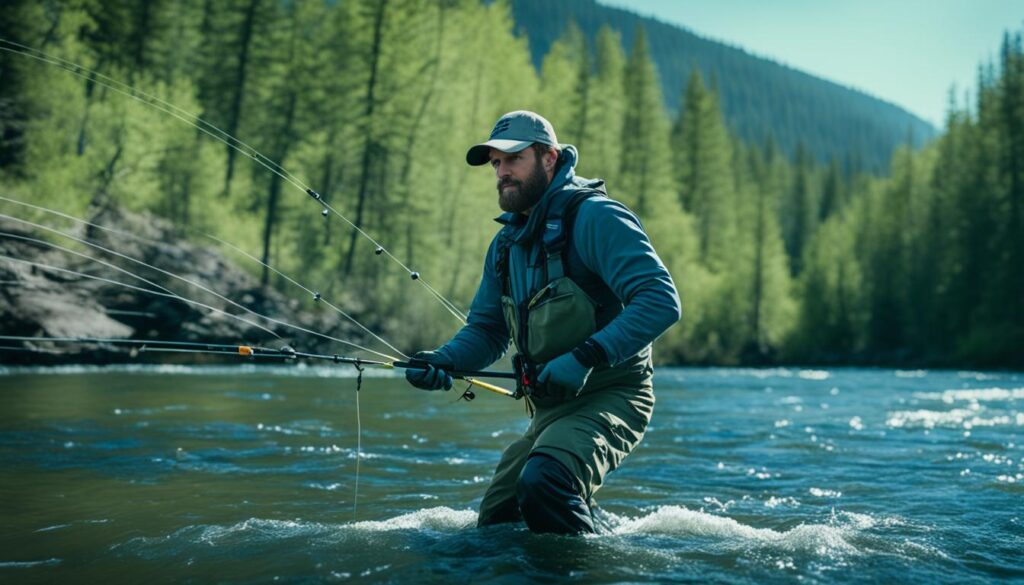
In fly fishing, getting the fly deeper is crucial to effectively target trout in their feeding zone.
Setting the Indicator and Reading Strikes
When nymph fishing, using an indicator is a common technique to detect strikes. To ensure success, it’s important to set the indicator at the right height that allows the nymph to reach the desired depth. We recommend setting the indicator at about twice the depth of the stream or river for fast currents. This ensures that the nymph is fishing in the trout’s feeding zone.
For slow currents, you can experiment with different indicator settings to find the optimal depth. The key is to have the nymph drift naturally in the water column, imitating the movement of real insects. By adjusting the indicator height, you can make subtle changes to the presentation and increase your chances of enticing a strike.
Reading the indicator is equally crucial. Learning to interpret the indicator’s movements will help you determine when a trout catches the nymph. Keep your focus on the indicator, observing any sudden movements, dips, or hesitation. These can be indications of a trout taking the fly.
Staying attentive and avoiding distractions while watching the indicator is vital. It requires patience and quick reflexes to react when the indicator signals a strike. Remember, the sooner you react, the higher your chances of hooking the fish.
The Indicator Height
Setting the indicator high allows the nymph to sink to the desired depth, as it gets carried along by the current. A high indicator position also helps to minimize the chances of the fly snagging on underwater obstructions or vegetation.
“By setting the indicator slightly higher than you think you need, you can ensure the nymph is in the trout’s feeding zone. It’s better to be a little too high than too low, as trout frequently feed up rather than down.”
Experiment with different indicator heights and adjust accordingly based on the depth of the stream and the fishing conditions. Keep in mind that the indicator should be visible enough for you to easily detect any subtle movements.
Reading the Indicator
Being able to read the indicator effectively is a skill that develops with practice and experience. Pay attention to any sudden changes or movements of the indicator, as these can indicate a trout taking the nymph. Dips or jerks are often signs of a strike.
“The indicator can provide valuable insights into what is happening beneath the surface. It can tell you whether the nymph is drifting naturally, if it’s getting snagged, or if a trout has taken the fly. Keep your eyes peeled for any subtle or unusual movements.”
However, it’s essential to differentiate between false alerts and actual trout strikes. Sometimes, the nymph may catch on rocks or vegetation, causing the indicator to twitch. Learning to distinguish between these false alarms and the delicate pull of a trout will improve your nymph fishing success.
Striking Techniques for Nymph Fishing
When it comes to nymph fishing, mastering the art of striking is essential for increasing your chances of hooking that elusive trout. In this section, we’ll share some valuable techniques to help you strike with precision and finesse, ensuring a successful catch.
- Strike Immediately: As soon as you see any indication from the indicator that a trout has taken the nymph, it’s crucial to act swiftly and strike without hesitation. Time is of the essence, and a delayed strike could result in a missed opportunity.
- Strike Lightly: While it’s important to strike quickly, it’s equally important to strike lightly. A gentle, delicate strike is more effective in enticing the trout to take the fly and prevents the fly from being ripped out of the fish’s mouth. Remember, subtlety is key.
- Stay Alert for False Alerts: Nymph fishing can sometimes lead to false alerts, such as the nymph catching on a rock or underwater debris. It’s essential to be able to differentiate between these false alarms and actual trout strikes. Pay close attention to the indicator and trust your instincts.
- Manage the Light Pull: Occasionally, you may experience a light pull of a trout taking the nymph. In such instances, it’s crucial to remain composed and not overreact. Let the trout turn and fully take the fly before striking gently to ensure a solid hookset.
By implementing these striking techniques, you’ll be able to optimize your nymph fishing experience. Remember, it’s all about finding that delicate balance between a quick and light strike, optimizing your chances of a successful catch.
Don’t forget to check out the image below showcasing a perfect nymphing setup in action:
Now that you’re equipped with the striking techniques for nymph fishing, let’s delve into the various nymphing techniques you can explore and integrate into your angling repertoire.
Exploring Different Nymphing Techniques
The success of nymph fishing relies on using the right fly patterns that imitate the local insect population. At XYZ Fly Shop, we encourage anglers to diversify their nymph fly collection and explore different patterns based on the season and the specific habitat they are fishing in. By incorporating realistic patterns that closely resemble the local insects, you’ll increase your chances of enticing trout to bite.
Seasonality plays a crucial role in nymph fishing as it affects the behavior and availability of insects. As the seasons change, different species of insects become more prevalent, influencing trout feeding patterns. By understanding the seasonality of your fishing location, you can tailor your nymph fly selection to match the insects that are most active and abundant during that time.
When nymph fishing, it’s essential to adapt your techniques to the specific water conditions. Deep water fishing involves targeting trout in the lower depths of the water column. This is where weighted nymphs, such as beadhead patterns or those made with tungsten, come into play. These flies sink quickly, allowing you to reach the desired depth and present your nymph in the trout’s feeding zone.
On the other hand, shallow water fishing requires a different approach. In shallower streams or slower currents, trout tend to feed closer to the surface. Using unweighted nymphs or patterns with minimal weight allows for a more natural drift and presentation in these conditions.
To enhance your nymph fishing skills, it’s worth exploring different nymphing techniques. One popular method is tight line nymphing, which involves maintaining direct contact with your nymph as it drifts through the water. This technique provides excellent sensitivity, allowing you to detect even the slightest strike. Another technique gaining popularity is European style nymph fishing, known for its efficiency and precision. It involves using long, lightweight rods and specialized nymphing lines, enabling you to achieve incredible control and accuracy.
Take a look at the table below for an overview of the different nymphing techniques:
| Nymphing Technique | Description |
|---|---|
| Tight Line Nymphing | A technique that involves maintaining direct contact with the nymph by eliminating slack in the line; provides excellent strike detection. |
| European Style Nymph Fishing | A technique originating from European competition anglers that utilizes long, lightweight rods and specialized nymphing lines for enhanced control and accuracy. |
| Deep Water Nymphing | A technique used to target trout in the deeper sections of the water column; involves using weighted nymphs to reach the desired depth. |
| Shallow Water Nymphing | A technique suitable for fishing in shallow streams or slower currents; uses unweighted nymphs for a more natural drift. |
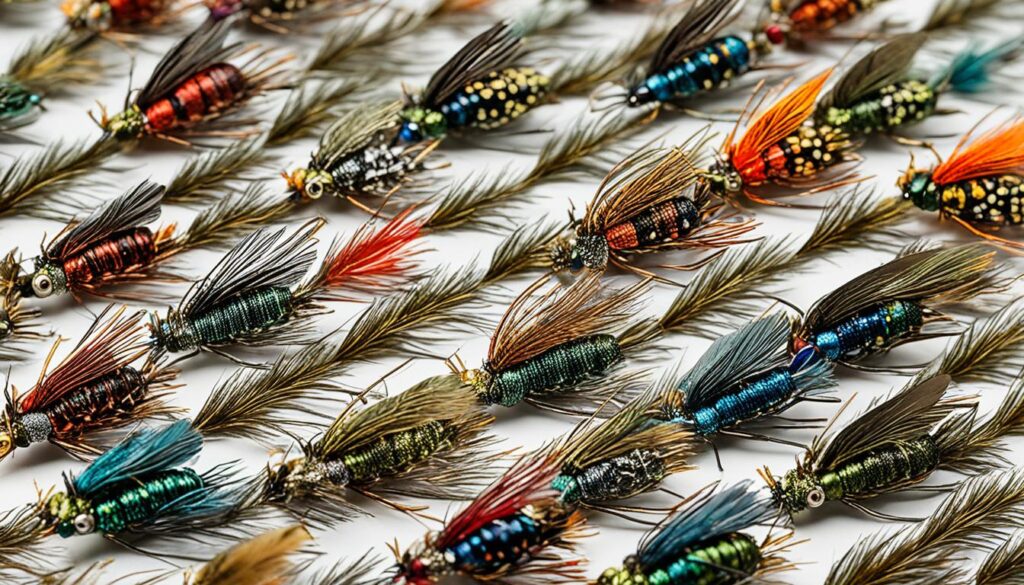
Exploring different nymphing techniques allows you to adapt to varying fishing conditions and increase your chances of success. By incorporating realistic nymph fly patterns, understanding seasonal insect populations, and utilizing appropriate techniques for deep water or shallow water fishing, you’ll be well-equipped to tackle any fly fishing challenge.
Conclusion
Deep water nymphing is an incredibly effective technique that can greatly enhance your fly fishing experience in streams and rivers, especially when targeting trout. Throughout this article, we have provided a comprehensive guide to deep water nymphing, offering you 20 valuable tips and strategies for successful fishing.
By understanding the differences between nymph fishing and dry fly fishing, you can better tailor your approach to the underwater nymphing techniques. Getting your fly deeper in the water column is crucial, and using weighted flies, such as beadhead patterns or those made with tungsten, can help you achieve the desired depth. Setting your indicator at the right height and reading strikes effectively will improve your chances of landing a catch.
Furthermore, exploring different nymphing techniques, such as tight line nymphing and European style nymph fishing, allows you to adapt to various fishing conditions and increase your chances of success. It is also essential to study the local insect population and choose fly patterns that replicate their appearance, ensuring a more realistic presentation to the trout.
With practice and patience, deep water nymphing can become a rewarding and productive method for fly fishing enthusiasts. By implementing the tips and strategies shared in this article, you can enhance your skills, increase your catch rates, and create memorable fishing experiences. So grab your gear, head to your favorite fishing spot, and enjoy the excitement and satisfaction of deep water nymphing!
FAQ
What is nymph fishing and how does it differ from dry fly fishing?
Nymph fishing involves using fly patterns that imitate the subsurface stages of insects, while dry fly fishing uses flies that replicate insects in their adult stage and float on the surface of the water.
How can I get the fly deeper in the water when nymph fishing?
To get the fly deeper, it is important to understand where trout feed, typically in the bottom 6 to 12 inches of the water column. Using a weighted fly, such as beadhead patterns or those made with tungsten, can help the nymph sink faster.
What is the recommended height for setting the indicator and how can I effectively read strikes?
The indicator should be set at about twice the depth of the stream or river in fast currents. In slow currents, you can experiment with the indicator setting. To effectively read strikes, it is crucial to stay focused and learn how to interpret the movement of the indicator.
What striking techniques should I use when nymph fishing?
When you see a sign from the indicator that a trout has taken the nymph, it is important to strike immediately. However, it is best to strike lightly to avoid ripping the fly out of the fish’s mouth. Differentiating between false alerts and actual trout strikes is key.
What are some different nymphing techniques I can explore?
To enhance your nymph fishing skills, you can explore deep water nymphing, shallow water nymphing, tight line nymphing, and European style nymph fishing. Each technique offers unique advantages depending on the fishing conditions and trout behavior.
